.
7.07.2013
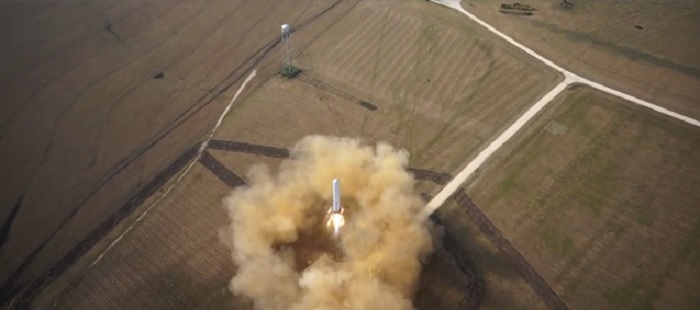
SpaceX hopes to send eager visitors up into orbit, but it first has to build a consistent way to get everyone there and back. To that end, the company has continued to experiment with its reusable Grasshopper rocket to test out some essential parts of what will eventually be a return landing system — and those tests have only proven more and more successful. The Grasshopper's latest launch sent it up to a record 1,066 feet. It's an impressive number, but not quite as important as the rocket's landing results: SpaceX says that not only did the Grasshopper reach a record height, but it touched down "smoothly" onto its landing pad.That success was made possible by a new navigation sensor included on the Grasshopper. The sensor provided additional detail about the rocket's relation to the ground beneath it, which SpaceX says was necessary for its control team to ensure a precise landing. Video of the rocket's takeoff was published Friday, though the launch itself occurred back on June 14th. The latest results underscore just how far the Grasshopper has come in a short period of time — only four months ago, the rocket had yet to reach even 300 feet high.
.
Frams: SPACE-X-VIDEO
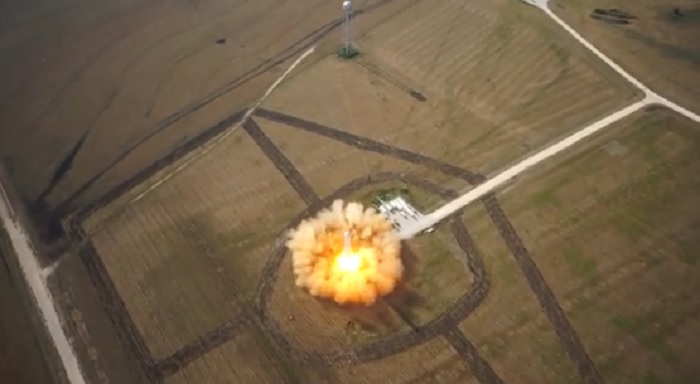
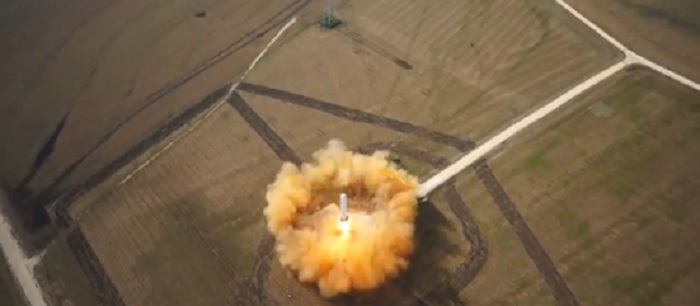


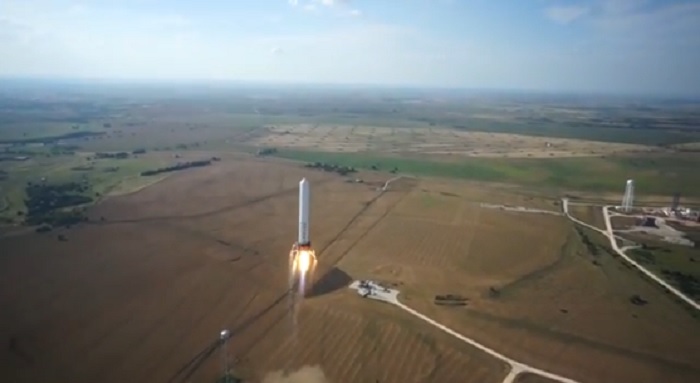
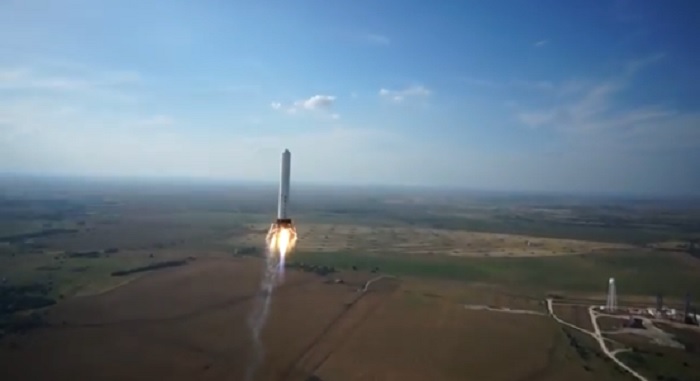
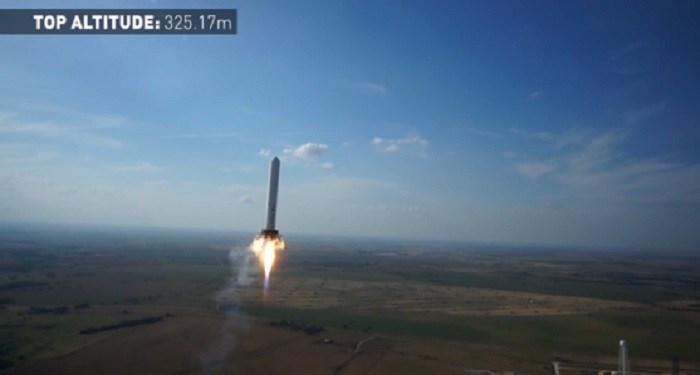
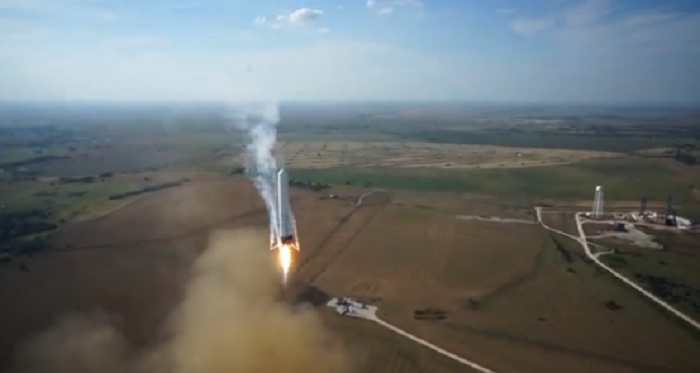


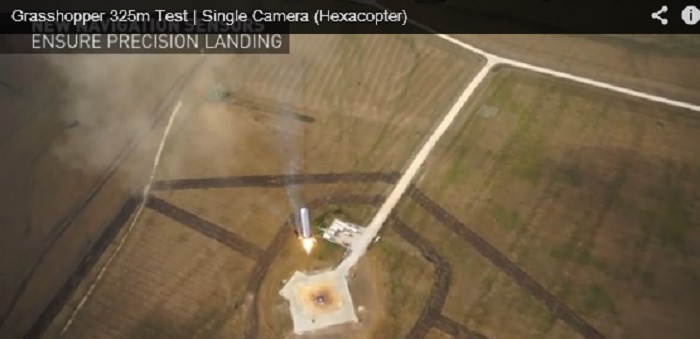
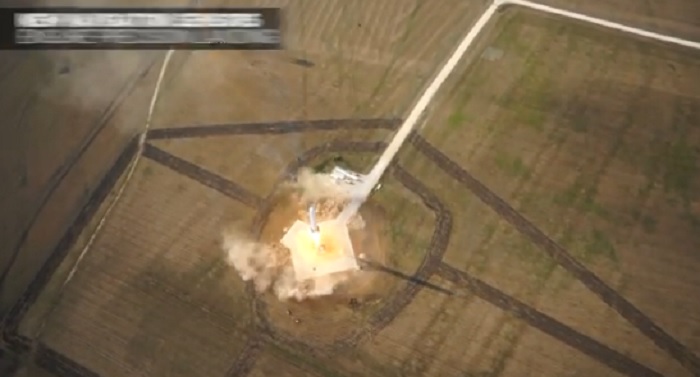
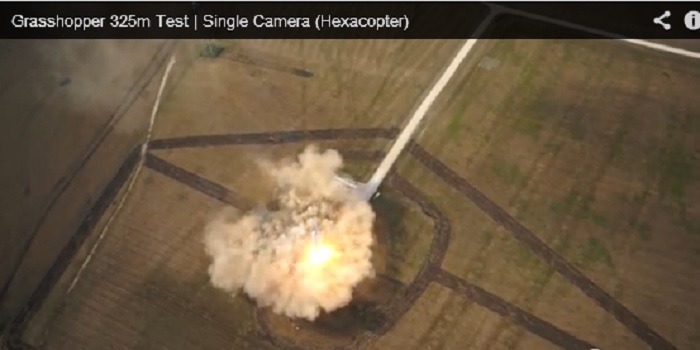

.
Update: 31.03.2014
.
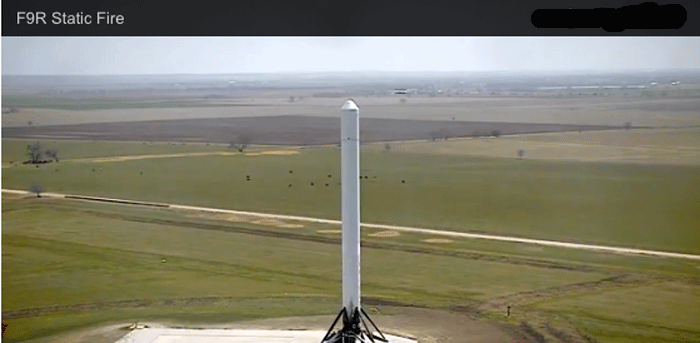
.
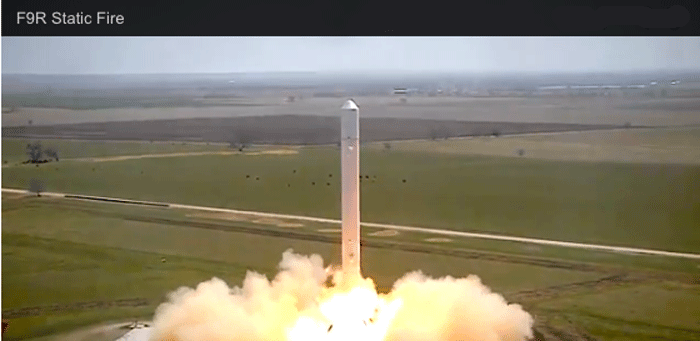
.
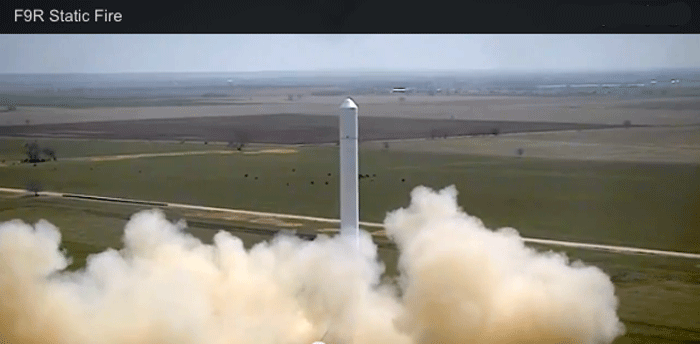
.
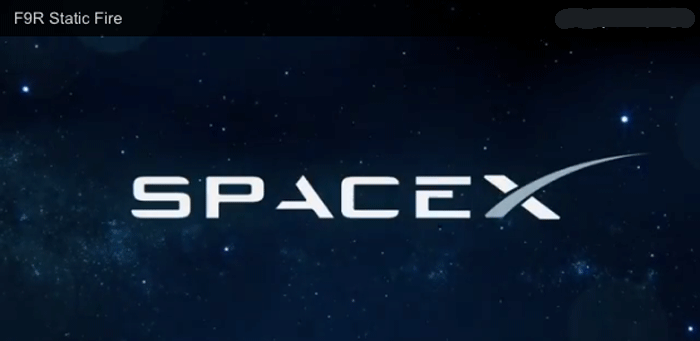
Quelle: Waco Tribune
,
Update: 2.05.2014
.
SpaceX Grasshopper successor flies again in McGregor
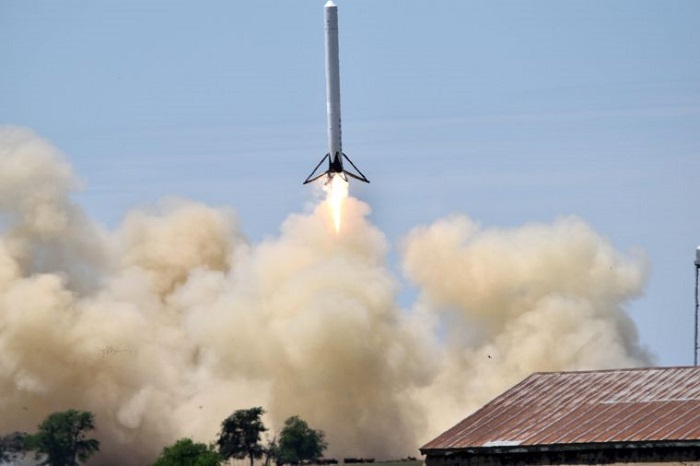
SpaceX’s F9R Dev test vehicle takes flight Thursday over the company’s McGregor development site. The rocket — larger brother to the Grasshopper that flew earlier at McGregor — is part of the company’s effort to develop a first stage that can return to the launch site for reuse.
Quelle: Waco Tribune

This image shows the view down from SpaceX's Falcon 9 rocket during its daring landing test over the Atlantic Ocean on April 18, 2014. The image was taken just before splashdown.
.
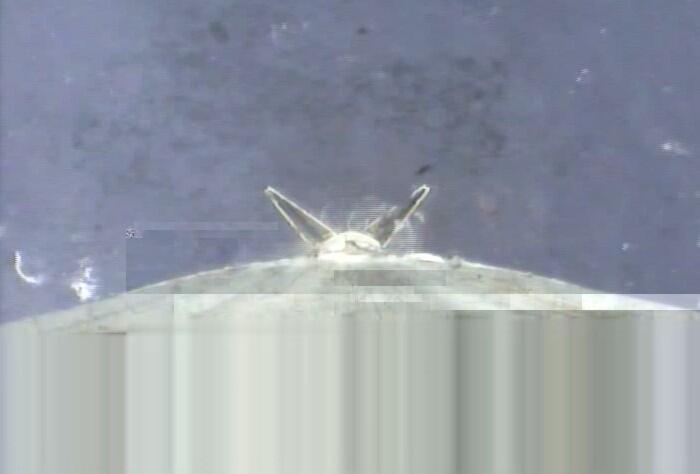
This is a cleaned up frame from the video captured by the boost stage of the Falcon 9 rocket that successfully splashed down in the Atlantic Ocean after launching to space. Elon Musk posted this photo on Twitter on April 29, 2014.
